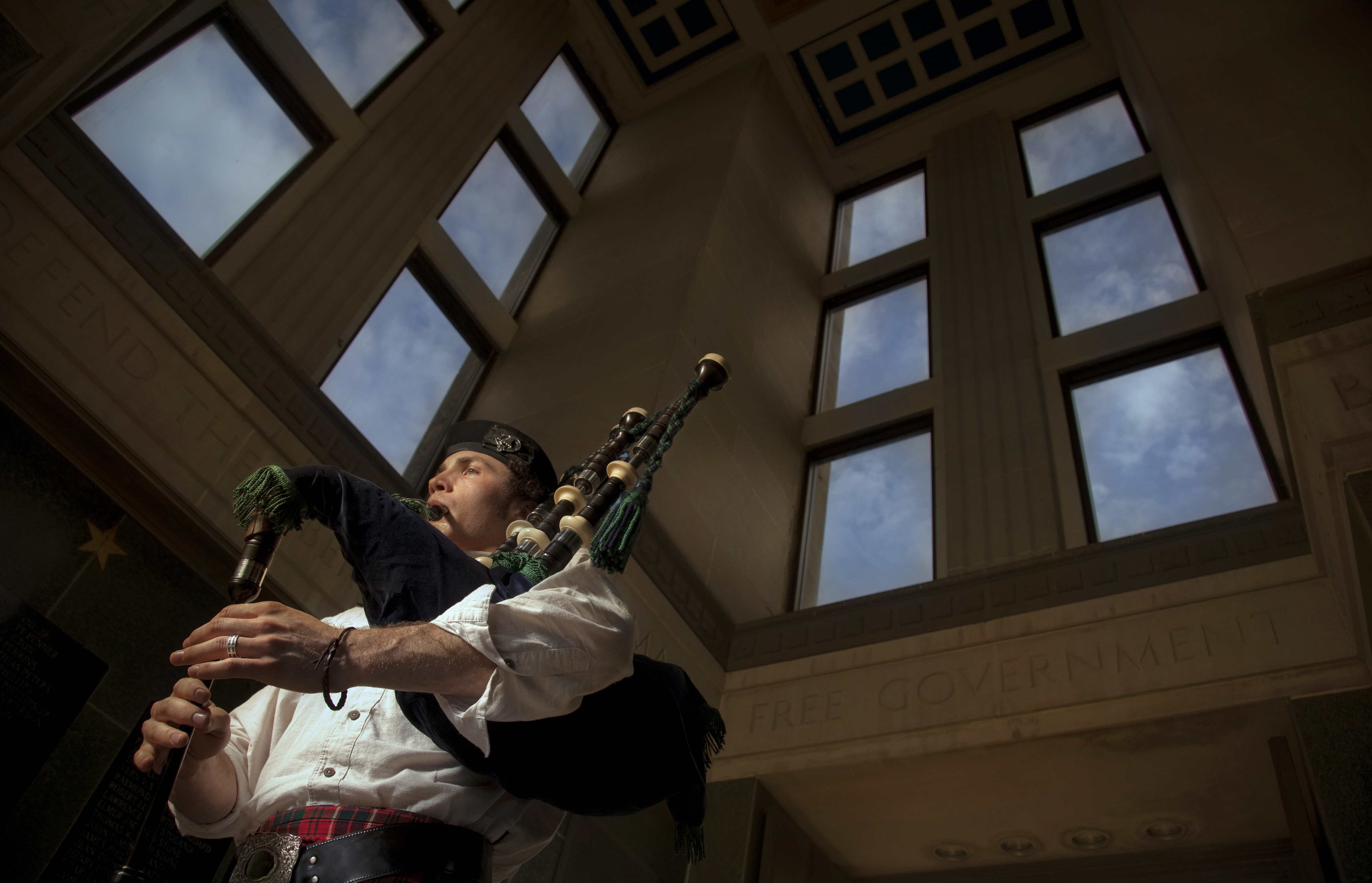Pipe down: KU student has love for noisy bagpipes

Kansas University junior Chris Hannemann, Wichita, plays his bagpipes inside the Campanile, a favorite place of his to play because of the acoustics, he says. Hannemann has taken a liking to the added attention that wearing a kilt and the traditional garb brings.
Chris Hannemann had the cops called on him at 4 p.m. a few weeks ago. He wasn’t having a party. He wasn’t arguing with his neighbors. He was practicing his bagpipes outside.
Hannemann, who will be a junior at Kansas University this fall, has been playing bagpipes for 2 1/2 years. He also plays guitar but became interested in bagpipes as a young boy when his neighbor played the instrument. Now, Hannemann plays for local funerals and weddings, and is also offering lessons for potential bagpipers.
Hannemann grew up in Wichita and originally attended Wichita State University for a music degree. That’s when he started playing the bagpipes.
“When I first started playing, I didn’t sound good,” he says.
He started on a chanter, a recorder-like instrument that helps people learn fingering.
Dorothy May, lesson coordinator for Kansas City St. Andrew Pipes & Drums, says playing on a chanter is the only way to learn bagpipes, and buying a cheap set online that isn’t made by a reputable maker won’t help novices at all.
“A cheap set of pipes does not help you learn,” she says. “They’re not good for anything except for firewood, and some are pretty enough to hang on a wall.”
May, who has played the bagpipes since 1990, says students play for three to six months on a chanter, learning fingering for the nine notes made from eight holes. They continue on to the ornaments and grace notes, which are necessary because bagpipes have only one sound level and a sustained note.
Hannemann spent six months learning on a chanter, and he later joined a Wichita bagpipe band. He says he got light-headed at first and had to deal with complex fingering.
“It’s like trying to blow up 10 balloons at once and trying to keep them blown up while someone’s trying to push them in,” he says.
Hannemann now plays on a used set of bagpipes that cost $1,500. And that’s relatively cheap. Some sets can be made with genuine ivory and silver, which push prices up past $2,500. Hannemann plays wearing the full get-up: a kilt, dress shoes called ghillie brogues, long-legged socks called hose, a pocket bag called a sporran, a belt, a shirt, a jacket and a hat called a glengarry.
Sometimes he takes his bagpipes out on Massachusetts Street, wears his traditional outfit and sets up a tip jar, entertaining passers-by.
It’s exactly the young people such as Hannemann that Kevan Regan, public relations director and piper for Kansas City St. Andrew Pipes & Drums, says keeps the piping tradition going.
“The old teach the new,” he says. “It’s a cool thing, a wonderful social gathering.”
Regan said it took him two years to be good enough to play in the band, but he had to earn his way in.
“If you want to be part of this culture, you have to follow the traditions,” Regan says.
Hannemann doesn’t play in a band right now. He plays funerals, weddings, in friends’ yards and downtown. Every Sunday he tries to go out to Campanile Hill to play because the sound carries and people from neighboring areas come up to watch him play.
And sometimes, he plays for his friends. One time, they had a party, and at 3 a.m. he got on the roof of his house and played.
“It’s loud and obnoxious, and there’s nothing like it,” he says.?




